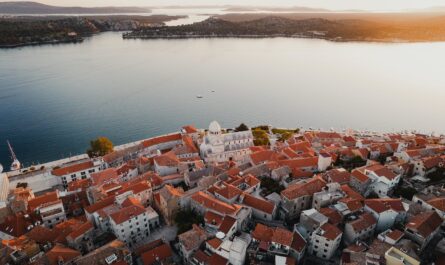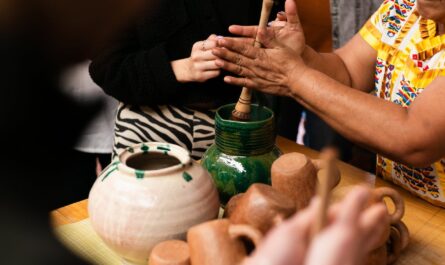Nestled in the heart of Eastern Europe, Transylvania has long been shrouded in mystery and mystique. Beyond its captivating landscapes and historic charm, the region boasts a rich tapestry of folklore and legends that have endured through generations. In this blog post, we delve into the enchanting world of Transylvanian tales, exploring the myths, creatures, and stories that have woven themselves into the cultural fabric of this captivating land.
The Land of Myths
Transylvania, with its medieval castles, dense forests, and ancient citadels, provides the perfect backdrop for a myriad of mythical tales. As the sun sets over the Carpathian Mountains, the region’s folklore comes alive, transporting locals and visitors alike into a realm where reality and imagination intertwine.
- Dracula: The Legendary Vampire
No exploration of Transylvanian folklore is complete without delving into the infamous Dracula legend. Inspired by the historical figure Vlad III, Prince of Wallachia, Bram Stoker’s Dracula novel has immortalized Transylvania as the home of the world’s most famous vampire. Despite the fictional nature of the story, the Dracula myth has become an integral part of Transylvanian culture, attracting countless visitors to the legendary Bran Castle.
- The Strigoi: Undead Spirits of the Night
In Transylvanian folklore, the Strigoi are malevolent spirits that rise from the grave, terrorizing the living. Often associated with vampirism, Strigoi are said to possess supernatural powers, including shape-shifting and the ability to control the weather. These tales serve as cautionary reminders to respect the deceased and adhere to local burial customs.
- The Zmeu: Enigmatic Dragons of the Sky
The Zmeu, mythical dragons in Romanian folklore, are not the fire-breathing behemoths of Western tales. Instead, these dragons are often depicted as benevolent creatures that inhabit the sky, guarding the celestial realm. Legends speak of brave heroes undertaking perilous journeys to rescue princesses kidnapped by Zmeu, adding a touch of romance to Transylvanian folklore.
- Ielele: Enchanting Forest Spirits
In the dense Transylvanian forests, the Ielele are said to dance beneath moonlit canopies, their ethereal beauty captivating all who witness their celestial movements. These enchanting forest spirits are both mesmerizing and dangerous, capable of either bestowing great fortune or cursing those who cross their path.
- The Miorița: The Tragic Ballad of the Shepherd
At the heart of Transylvanian folklore lies the poignant ballad of Miorița, a tale of betrayal and sacrifice. The story revolves around three shepherds, one of whom overhears a plot to kill him by the others. Instead of seeking revenge, the shepherd accepts his fate with grace, instructing his beloved sheep to deliver messages to his family and friends. Miorița is not just a folk song but a cultural gem, reflecting the resilience and fatalistic acceptance deeply ingrained in the Transylvanian spirit.
- The Solovastru: Guardian of Treasure
In the depths of Transylvanian mountains, folklore tells of the Solovastru, a mystical creature with the ability to transform into various shapes. Often associated with hidden treasure, the Solovastru serves as a guardian, protecting the wealth buried within the earth. Those brave enough to embark on a quest for these treasures must contend not only with the physical challenges of the landscape but also with the cunning tricks of the elusive Solovastru.
- The Fata Padurii: Forest Nymphs and Protectors
Within the dense forests that cover much of Transylvania, the Fata Padurii, or Forest Nymphs, are believed to reside. These ethereal beings are both enchanting and capricious, playing a role as both protectors and punishers of the wilderness. Folk tales recount encounters with these mysterious nymphs, emphasizing the importance of respecting nature and the delicate balance between man and the environment.
- The Golden Stag: Symbol of Purity and Good Fortune
In Transylvanian folklore, the Golden Stag is a majestic creature believed to bring good fortune and prosperity to those fortunate enough to encounter it. Often appearing in dreams or leading travelers through the mystical landscapes, the Golden Stag is a symbol of purity and spiritual enlightenment. Its elusive nature makes it a revered figure, with locals considering a sighting as a sign of divine favor.
- The Moroi: Malevolent Spirits of the Night
In Transylvanian folklore, the Moroi are malevolent spirits associated with the restless dead. These nocturnal entities are believed to return to the world of the living to torment the living or seek vengeance for perceived wrongs. The tales of the Moroi often emphasize the importance of proper burial rites and the consequences of disturbing the peace of the departed. It serves as a cautionary reminder to respect the boundaries between the living and the dead.
- The Bucur: Protector of the Mountains
The Bucur is a mythical guardian spirit believed to dwell in the Carpathian Mountains, watching over the natural beauty of Transylvania. Often depicted as a wise and benevolent figure, the Bucur is said to guide lost travelers to safety and protect the mountains from harm. Local folklore suggests that showing reverence for the environment and practicing responsible stewardship can earn the favor of the Bucur, ensuring the preservation of Transylvania’s pristine landscapes.
- The Ursul: Dancing Bears and Festival Celebrations
In some Transylvanian communities, the Ursul, or Dancing Bear, is a figure associated with winter festivals and celebrations. Participants dress in elaborate bear costumes, adorned with bells and ribbons, and engage in lively dances to usher in the changing seasons. This tradition, rooted in ancient rituals, symbolizes the cycle of life, death, and rebirth, connecting the community with nature and embracing the enduring spirit of Transylvanian folklore.
- The Călușari: Ritual Dancers and Protectors Against Evil
The Călușari are a group of ritual dancers in Transylvanian folklore, recognized for their vibrant performances and protective role in warding off evil spirits. Their intricate dances and symbolic rituals are believed to bring blessings, healing, and prosperity to the communities they visit. The Călușari tradition underscores the importance of communal rituals and the belief in the power of collective action against malevolent forces.
- The Domnița Raluca: The Enigmatic Lady of the Lake
In the heart of Transylvania, the legend of Domnița Raluca, the Lady of the Lake, weaves a tale of mystery and tragedy. According to folklore, Domnița Raluca was a noblewoman who, heartbroken and betrayed, retreated to the depths of a mystical lake. Legend has it that her spirit still lingers, occasionally surfacing to warn or guide those who venture too close. The story of Domnița Raluca serves as a poignant reminder of love, loss, and the enduring connection between the human spirit and the natural world.
- The Zamolxe: Ancient God and Guardian of Transylvania
In the annals of Transylvanian mythology, Zamolxe is an ancient god revered by the Dacian people who once inhabited the region. As the deity of nature, fertility, and protection, Zamolxe is believed to watch over Transylvania, ensuring harmony between the land and its inhabitants. The tales of Zamolxe highlight the deep-rooted spirituality of the region and its historical ties to ancient civilizations that have shaped the cultural landscape.
- The Mănăstirea Roșie: The Cursed Red Monastery
Perched on a hill in Transylvania, the Mănăstirea Roșie, or Red Monastery, is the setting of a chilling legend. According to folklore, the monastery was cursed due to the misdeeds of its inhabitants, turning the walls a deep shade of red. Locals believe that the spirits of the cursed monks still haunt the ruins, and cautionary tales abound about the consequences of straying too close to the mysterious and spectral remnants of the once-holy site.
- The Ciudatul: Shape-Shifting Tricksters
The Ciudatul are mischievous shape-shifters that roam the Transylvanian countryside, often taking on the guise of animals or even humans. These cunning creatures are known for their tricks and pranks, playing on the vulnerabilities of unsuspecting travelers. Folklore warns that the only way to thwart the Ciudatul’s mischief is through wit and resourcefulness, making encounters with these tricksters both whimsical and challenging.
Preserving the Supernatural Heritage
In the face of modernization, there is a growing awareness of the need to preserve not only the tangible aspects of Transylvania’s heritage but also its supernatural and mystical traditions. Museums, cultural institutions, and folklore enthusiasts collaborate to document and share these stories through multimedia exhibits, storytelling events, and immersive experiences, ensuring that the rich tapestry of Transylvanian folklore remains a vibrant and integral part of the region’s identity.
Final thoughts
Transylvania’s folklore is a kaleidoscope of enchanting tales that transcend time and captivate the imagination. From the mysterious Lady of the Lake to the ancient god Zamolxe, the cursed Red Monastery, and the mischievous Ciudatul, each story adds depth to the cultural legacy of this extraordinary region. As Transylvania embraces the challenges of the present, the preservation of its supernatural heritage becomes a testament to the resilience of tradition and the enduring allure of the mystical realm that continues to shape the very essence of this captivating land.




